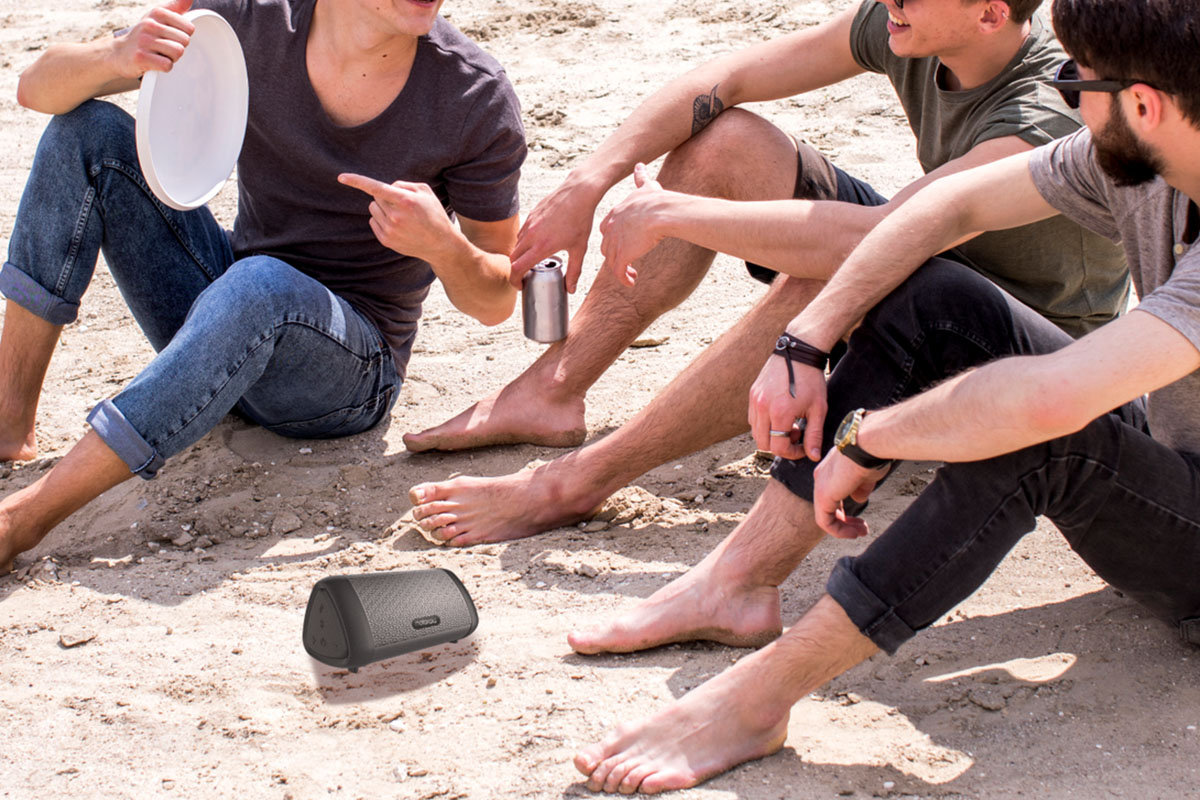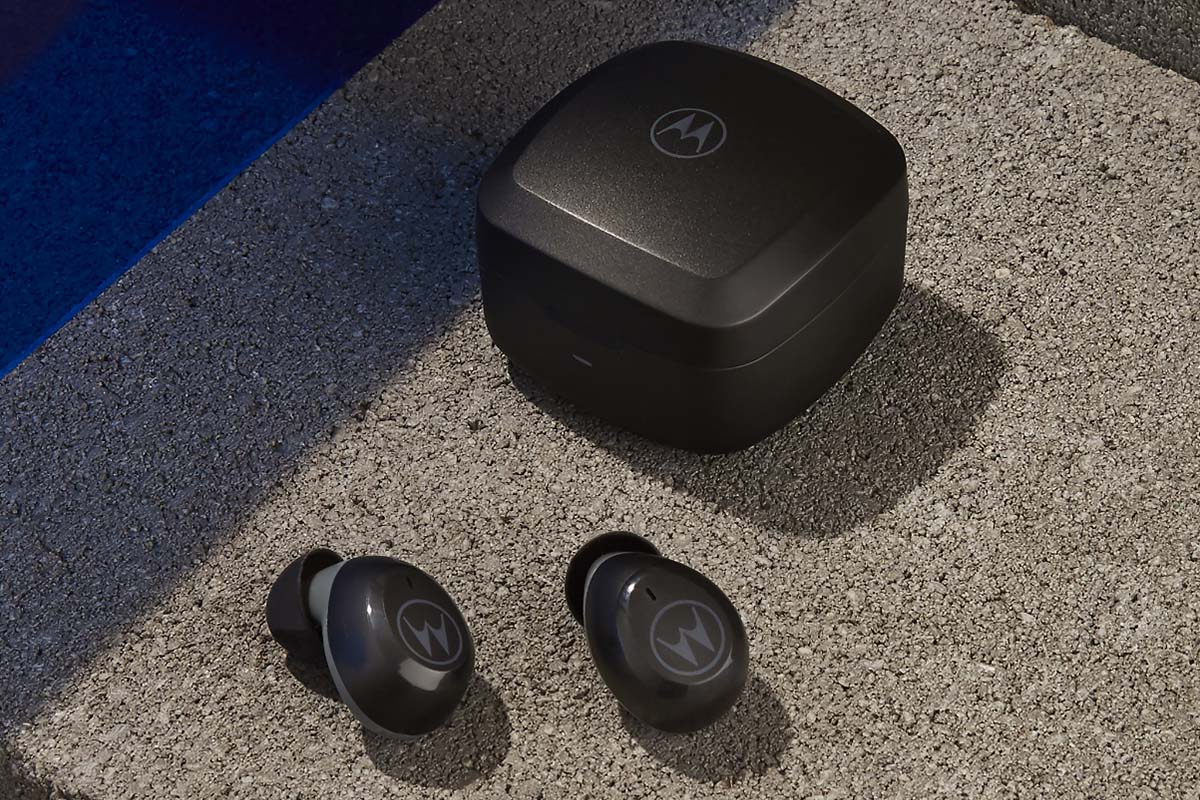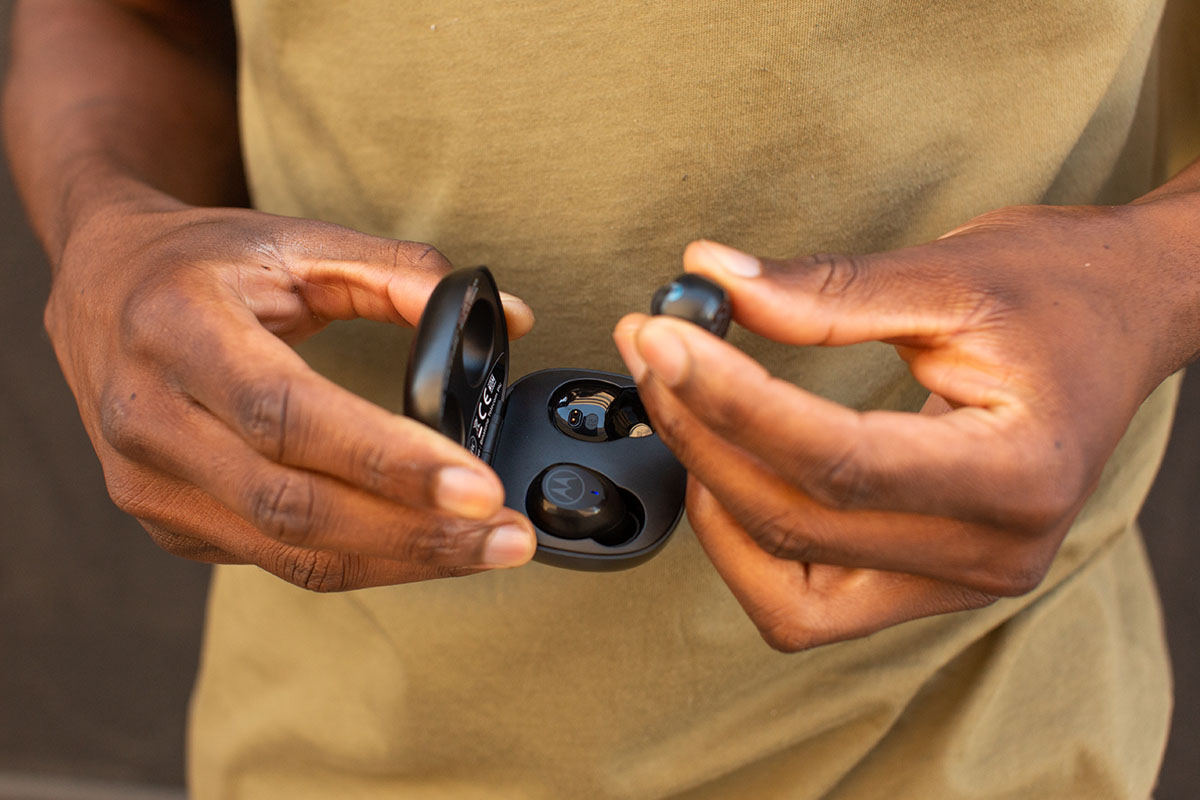
Listen to your favorite tunes without wires in 2021! We’re all not quite sure what the new year will bring, but you can make sure it’s filled with your favorite playlists and podcasts with the right sound solution for the job.
And fortunately, as we’re all still a little tapped out from so much gifting, there’s a 20 percent off sitewide sale ready to help you ring in the new year. From Bluetooth-ready speakers to wire-free in-ear headphones, there are all kinds of options available on sale right now. Snag them now for 20 percent off with promo code HOLIDAY20 for a limited time.

Motorola Sonic Sub 530 Wireless Bluetooth Speaker
Don’t stop the music, wherever you go. This Motorola Sonic Sub 530 Wireless Bluetooth Speaker gives you 9 hours of powerful stereo sound quality thanks to the 5-watts speaker. It answers to voice commands like Siri, Alexa, and Google Assistant, and it can also tag along to your next pool party or beach hang since its IPX5 certified waterproof.

Motorola Tech4 Smart True Wireless Earbuds
Looking for earbuds that do more? These 3-in-1 earbuds let you listen to up to 11 hours of quality audio via sports loop, audio plug-in, or completely wireless. The handy plug-in option means you can have unlimited playtime and you never need to worry about how strenuous your workout is thanks to their water-resistant status. There’s even a feature to help you find them if you misplace them, making these an ideal pick for those that hate searching around for their earbuds.
Get the Motorola Tech4 Smart True Wireless Earbuds for $67.96 (reg. 99) with promo code HOLIDAY20.

VerveBuds 100 True Wireless Earbuds
Ditch the wires and take your music to go anytime with the VerveBuds 100 True Wireless Earbuds. They deliver 5 hours of playtime and 9 hours with the case, all providing superior sound quality. They offer hands-free calling, an ergonomic design that ensures a comfy fit, IPX5 waterproof status and the ability to use voice command like Alexa, Siri, and Google Assistant when needed, all with an impressive 4.1 out of 5 stars on Amazon.
Get the VerveBuds 100 True Wireless Earbuds for $33.56 (reg. $49) with promo code HOLIDAY20.

Moto Buds Charge True Wireless In-Ear Headphones
Don’t miss a beat with 10 hours of battery life thanks to The Moto Buds Charge True Wireless In-Ear Headphones. These wireless earbuds provide superior sound quality for music and calls. Charge them on the go using the integrated Mobile-charge cable and then relax with these ergonomic, water and sweat resistant sound solutions. And if you are partial to a specific power option, they also include a USB-C cable and USB-C charging port to suit your needs.

Motorola Sonic Sub 500 Wireless Fast Charging Speaker
If you’re in need of a Bluetooth speaker that does more, the Motorola Sonic Sub 500 Wireless Fast Charging Speaker is up to the task. Equipped with a powerful 5W RMS speaker unit with built-in subwoofer, you’re guaranteed to receive outstanding powerful sound, and the slim size makes it perfect to bring along anywhere. Aside from playing music, you can also take calls and use it to charge up your phone or headphones that to its 10W wireless turbo charging pad.
Note: Terms and conditions apply. See the relevant retail sites for more information. For more great deals, go to our partners at TechBargains.com.
Now read:
- ET Deals: $60 Off Apple Watch Series 6, Dell Inspiron 15 5000 AMD Ryzen 5 4500U Laptop for $499
- Keep Your PS5 Cool And Your Controllers Charged With This Dock
- ET Deals: $549 off Dell XPS 13 7390 13.3-Inch Intel Core i7 4K Laptop, iRobot Roomba i6+ 6550 Self Emptying Robot Vacuum for $549
from ExtremeTechExtremeTech https://ift.tt/2WYgooH

































